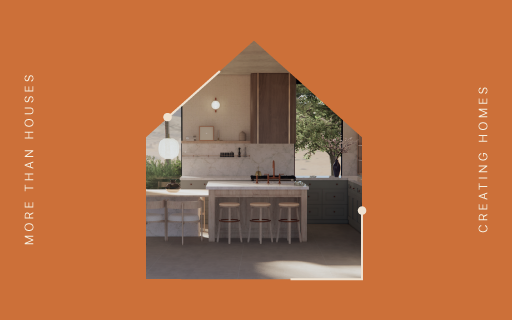For most people, the square footage of their home is probably not at the top of their minds, but you have to know that any change to your home, either small or big, could require knowledge of its exact size. And it’s not only important for renovation projects; square footage affects property taxes, market value, insurance rates, and resale prices. It’s then one of the most essential aspects that any homeowner, buyer, seller, real estate agent, and appraiser should know regarding a property. But how can we know what the square footage measure is?
Your first impulse may be to rely on the dimensions registered in reported figures, like the blueprints for the property, the tax records, etc., but what happens if all of these documents seem to have discrepancies? Well, then we advise you to take on the job of measuring it yourself.
However, measuring square footage isn’t always as straightforward as it sounds. With varying guidelines from different sources, knowing how to measure a home’s square footage the right way is critical.
In this article, we’ll walk through the proper method for measuring a home’s square footage, explain the industry standards, and clarify common points of confusion. So, read on!
Why Square Footage Matters
Before diving into the “how,” it’s worth understanding why square footage is so important:
- Market Value: Real estate is often priced by square foot. An accurate measurement ensures fair market comparisons.
- Appraisals and Loans: Lenders rely on precise square footage for mortgage appraisals.
- Property Taxes: Many counties assess property taxes based on size.
- Insurance Coverage: Homeowners’ insurance premiums may be influenced by the square footage.
- Renovation and Planning: As we said from the beginning, accurate dimensions are crucial when planning remodels or expansions, so you make sure you’ll avoid dimension mistakes during the renovation project.
Given these stakes, accurate measurement is not optional: it’s essential.
Is There a Standard for Measuring? And, Who Sets this Standard?
In the United States, the American National Standards Institute (ANSI) developed a guideline known as ANSI Z765, which outlines how to consistently measure the square footage of detached single-family homes. While not legally binding, ANSI standards are widely accepted in the real estate industry, especially by appraisers.
That said, some regions or Multiple Listing Services (MLS) may follow slightly different protocols. It’s always best to confirm what your local market requires. Nevertheless, ANSI Z765 is an excellent baseline.
What Counts Toward Square Footage?
This is where many homeowners get tripped up: not everything under the roof is counted toward a home’s official square footage. According to ANSI standards, for a space to be included in the Gross Living Area (GLA), it must meet these conditions:
- Above grade: Only areas above ground level are included in GLA. Basements, even if finished, are generally listed separately.
- It has to be finished: The area must have finished walls, ceilings, and floors, similar to the rest of the living space.
- It has to be heated and livable: The space must be heated or cooled by a conventional system and suitable for year-round use.
- Assure that it is accessible and connected: Areas must be directly accessible from other living spaces. For example, a finished attic that’s only reachable via a ladder or pull-down stairs typically doesn’t count.
That being said, the areas that are typically included are: bedrooms and bathrooms, living and family rooms, kitchens, closets, hallways, finished attics (if they are accessible), and sunrooms (if heated and finished).
Following that thread of thought, what’s typically excluded are: garages, unfinished basements or crawl spaces, porches and decks (even if enclosed, unless fully finished and heated), storage sheds or outbuildings, and stairwells (for this case, only count the floor area covered at each level, not the entire vertical volume).
Step-by-Step: How to Measure Square Footage
Now, we will explain to you how to correctly measure your home’s square footage using a simple, easy-to-break-down method aligned with ANSI standards.
Step 1: Gather Tools
You’ll need:
- A 25- to 100-foot measuring tape (or a laser distance measurer for convenience, to be more precise)
- Something you can use to make sketches
- Calculator
- A Clipboard or a notebook for recording dimensions
Step 2: Draw a Sketch
Start by drawing a rough floor plan of each level of your home. Don’t worry if your sketch doesn’t look very architect-like: this is just to help you organize your measurements. Label each room and space.
Step 3: Measure the Exterior
To calculate GLA, you measure the exterior of the home. Measure the length and width of each side of the house at ground level. Multiply each length by its corresponding width to calculate the square footage of each rectangular section.
If the home is not a perfect rectangle (which is common), break it down into smaller squares or rectangles. For example, an L-shaped home can be split into two rectangles.
Let’s say you have:
- Main rectangle: 60 feet wide x 40 feet deep = 2,400 sq ft
- Small addition: 12 feet x 18 feet = 216 sq ft
Total = 2,616 sq ft
Repeat this for each above-grade level of the home. A two-story home with identical layouts would simply double the number.
Step 4: Account for Interior Features
Now that you have the general shape, confirm that the measured areas meet the criteria for finished and livable space. Be sure to exclude garages, open porches, and unfinished basements, as we said before in the “what’s excluded part”, even if these areas are inside the main footprint of the building.
Staircases only need to be measured once. For example, the stairwell area is counted in the level it originates from.
Step 5: Add it Up
Once you’ve measured and confirmed all qualifying areas, add them together. Keep upper floors, basements, and garages listed separately to avoid confusion.
Here’s an example:
- Main Floor: 2,400 sq ft
- Second Floor: 2,000 sq ft
- Finished basement (not included in GLA): 1400 sq ft (listed separately)
Total GLA: 4,400 sq ft
How to Calculate a Room With Closets
These rooms are measured wall-to-wall, including the closet space. So you need to measure the length and width of the room including the closet area, and then multiply the two numbers together.
Example:
- Bedroom length = 12 feet (including closet)
- Width = 10 feet
12 x 10 = 120 sq ft
Remember: There’s no need to subtract closets from the total, as they are considered part of the finished, livable space as long as they meet the same finish standards as the rest of the room.

What About Condos and Apartments?
Unlike single-family homes, condos and apartments are usually measured from the interior walls, not the exterior. You include all interior living areas but exclude shared walls, mechanical spaces, and areas not deeded to the unit.
Always check with your HOA or building management to confirm specific measurement policies.
Common Mistakes to Avoid
- Including Basements in GLA: Even beautifully finished basements aren’t counted in the main square footage if they are below grade.
- Relying on Tax Records: County records often contain inaccuracies. Always verify square footage independently.
- Excluding Attics or Lofts: Finished, heated, and accessible attic spaces may qualify, so don’t overlook them.
- Ignoring Local Rules: Some areas have MLS rules that deviate slightly from ANSI. Be informed by a realtor if that’s your case.
When to Hire a Professional
While measuring your own home can be done with care and patience, hiring a professional appraiser or certified home measurer can always be a good call, just to make sure, and especially if you’re selling your home and want an accurate listing or you’re applying for a refinance or home equity loan. It’s important to have a double professional check if you’re involved in a legal or tax dispute, or you simply suspect the existing square footage register is not correct.
An appraisal uses tools like laser measurers and floor plan software to calculate reliable and verifiable reports, so you’ll be in good hands.
FAQs:
Here are some frequently asked questions that we want to make clear:
Should I Measure the Square Footage Inside or Outside My House?
For single-family homes, measure from the exterior walls. This method aligns with ANSI standards and is commonly used in appraisals and real estate listings.
In contrast, condos and apartments are usually measured from the interior walls, since exterior walls are typically shared and not deeded to individual owners. This is often referred to as the “paint-to-paint” method.
Is There an App or Website to Measure the Square Footage of a House?
Yes, there are many apps and online tools that can help, like MagicPlan and RoomScan Pro. But remember, even if these apps are useful, they may not always meet industry measurement standards, so it’s important to always verify manually or with a professional.
Should Square Footage Affect My Buying Decision?
Yes, you should consider this since it gives you a sense of the true value and livability of a home based on its sized and compare it with others; however, it should not be the only reason why you’re deciding on a particular property, remember that it’s your home, so you need to feel the most comfortable with other important aspects such as the layout, its design and condition.
What’s a bigger, poorly designed home compared to a smaller yet more harmonious home that looks more spacious thanks to a better distribution and design? We’re sure you know what we’re talking about and you’ll make the good call when it’s time to decide.
Certainly, knowing how to properly measure and calculate square footage can save you time and costly errors. Because, at the end of the day, square footage is more than a number: it’s a foundational aspect of a home’s value and functionality. Measure smart, and you’ll have one more tool in your homeowner’s toolkit.




